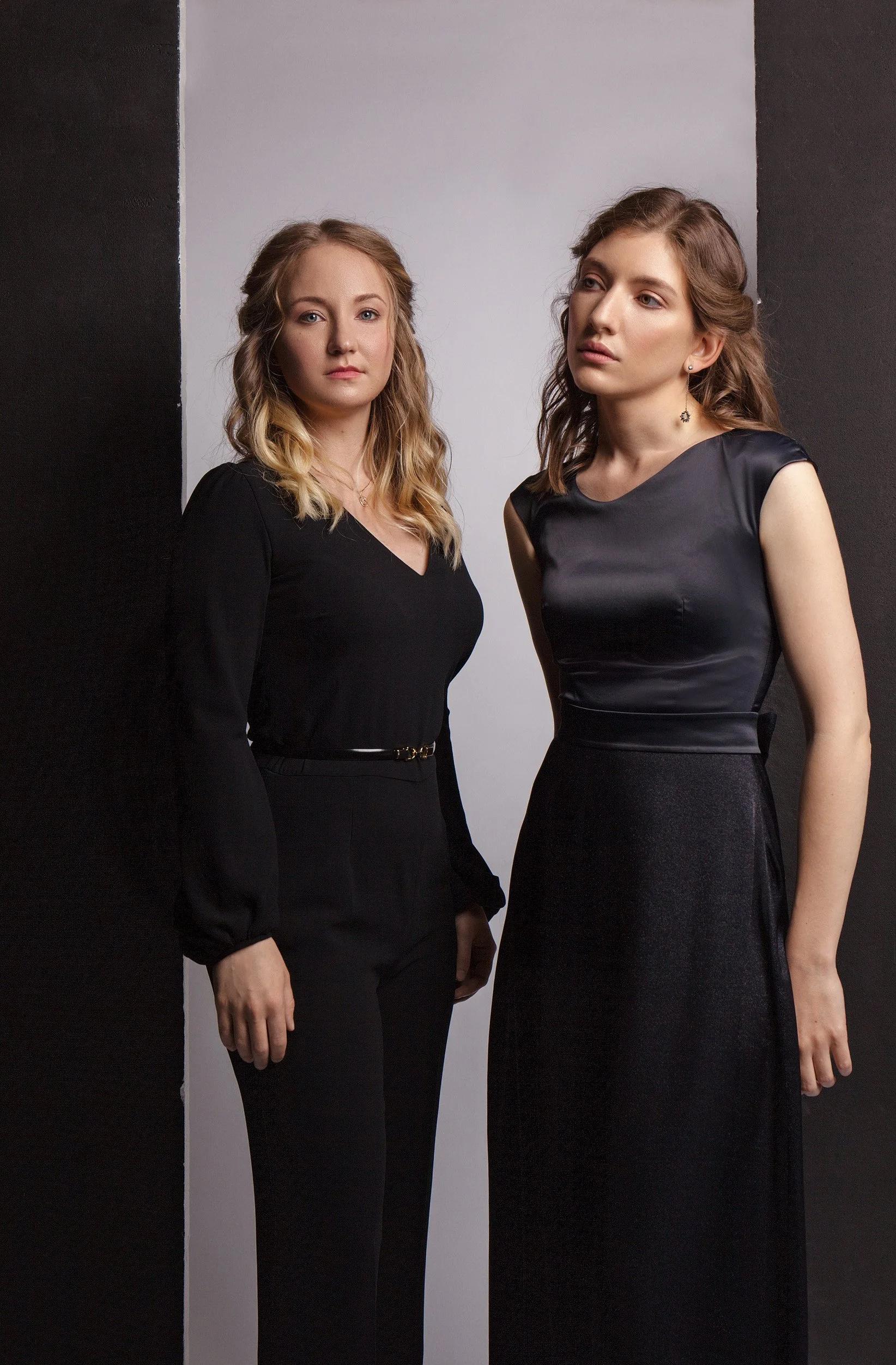Ekaterina Zhemaitis and Polina Kulikova
A concert of music for piano, quatre-mains
PROGRAM:
Schubert - Fantasie f-moll, D.940
Ravel - Ma mère l’oye
Pavane de la Belle au bois dormant
Petit Poucet
Laideronnette, impératrice des pagodes
Les entretiens de la belle et de la bête
Le jardin féerique
Stravinsky - Le Sacre du printemps
Part I: L'Adoration de la Terre
Part II: Le Sacrifice
Enchantments
A declaration of love, a children’s fairy tale, and a pagan sacrifice — three stories told without a single word, only through music. It is akin to enchantment: we are transported to other worlds, traveling through time and space, capable of completely feeling another’s pain, tenderness or euphoria. “Music takes us out of the actual and whispers to us dim secrets that startle our wonder — who we are, and why we are here.” (R. W. Emerson, essay The Poet)
The Fantasy in F minor is dedicated to Caroline Esterhazy, Schubert's student, with whom he was in love. Without giving the slightest sign that could reveal his feelings, he continued to teach the girl music regularly. It was not a matter of natural timidity, but of social conventions: his status as a poor hired composer left no hope not only for reciprocity on her part, but also for the very right to declare his love, apart from the phrase once that all his works were actually dedicated to her. In 1828, from January to March, Schubert composed a Fantasy in f minor in four hands. He sent a copy of the sheet music to Caroline by mail, enclosing a letter in which he spoke about his feelings and that he was dedicating this piece to her. Nothing is known about the reaction of Esterhazy's daughter – the reply letter (if there was one at all) has not been preserved.
The main themes of the fantasy are built around two notes — F and C. There is a very convincing theory that these are nothing other than the initials of the names Franz and Caroline. The piece opens with an incredibly touching, vulnerable, and reverent theme that, like a spell, is constructed exclusively from these notes.
In the autumn of 1908, Ravel composed five pieces for piano four hands, dedicated to Mimi and Jean Godebski. They were the children of his friends, whom the composer—who had no family of his own—loved like his own. When their parents spent the summer in Spain, Ravel stayed at their villa with the children and, in his own words, told them various stories—“not too sad in the evenings to avoid nightmares, and gloomy in the mornings to stimulate the appetite.” Such stories in music, born from the desire, as the composer recalled, “to recreate the poetry of childhood,” he expressed in the five pieces of the suite Ma mère l’Oye (Mother Goose). The title of the suite is connected to an old tradition of French folklore. Mother Goose is the name of a fairy-tale storyteller, often depicted with goose feet, to whom many folk tales were attributed. The same name was given to the first collection of French fairy-tale adaptations, published in 1697 by Charles Perrault.
The Rite of Spring is one of the most striking and innovative ballets of the 20th century. Composed in 1913 for Sergei Diaghilev’s Ballets Russes, the ballet caused a genuine sensation in its time: while the audience at the premiere was shocked and outraged by both the music and the storyline, they later came to revere the work. About the ballet’s concept, the composer recalled: “In my imagination, quite unexpectedly—because I was thinking about something entirely different at the time—there appeared a scene of a sacred pagan ritual: wise elders sit in a circle watching the death dance of a girl whom they sacrifice to the god of spring in order to win his favor. This became the theme of The Rite of Spring.” At its core, the entire ballet is a scene of pagan sacrifice, and the dominant element of the ballet is rhythm—hypnotic and allcommanding. Later, the composer arranged the ballet for piano four hands, which will be performed at this concert.
Piano duo Polina Kulikova – Ekaterina Zhemaitis was formed in 2014 as part of the chamber music studios of Alexander Bonduryansky at the Moscow State Tchaikovsky Conservatory. As soloists they have worked with outstanding musicians Vera Gornostaeva and Elena Kuznetsova.
Since then they have won several competitions all around the world. The duo got the Second Prize at The I International Piano Duo Competition named after Adolf and Mikhail Gottliebs (Russia, Moscow, 2014), the First Prize and two special prizes at The V International Taneev Chamber Music Competition (Russia, Kaluga, 2014), the First Prize and five special prizes at The VI International Piano Duo Competition (Poland, Bialystok, 2015), Grand Prix and special prize for the best performance of romantic music at The International Kabalevsky Music Competition (Russia, Moscow, 2017), the Third prize at The XX International Schubert Competition for piano duos (Jesenik, Czech Republic, 2017) and the First prize at the XVIII International Academic Music Competition in Jūrmala (Jūrmala, Latvia, 2017).
Nowadays Ekaterina and Polina are continuing their studies with Evgeniy Sinaisky at Folkwang University of the Arts in Essen, Germany.
TICKETS €25 / children €20 via: PianoDuo.stager
